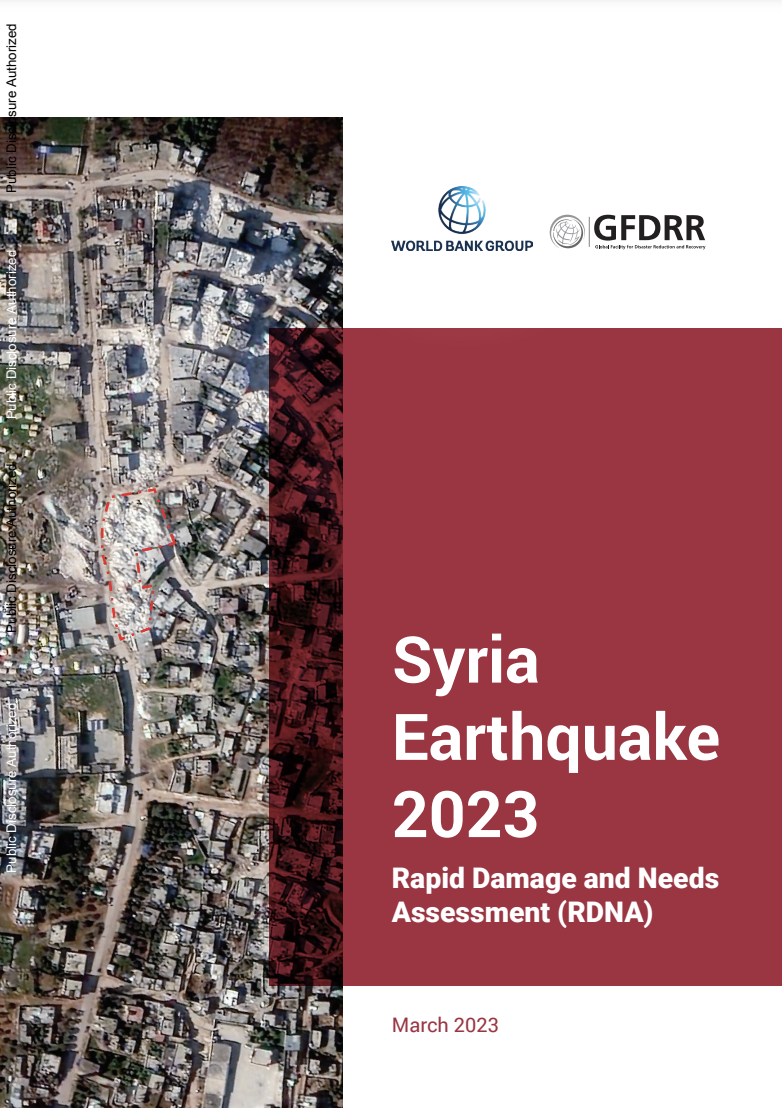Following the magnitude (Mw) 7.8 Türkiye-Syria Earthquake on February 6, 2023, and the (Mw) 6.3 earthquake on February 20, 2023, the World Bank launched the Syria Rapid Damage and Needs Assessment (RDNA). The objective of the RDNA is to estimate the impact of the earthquake on physical assets and service delivery in the most affected areas. The RDNA covers six governorates with roughly 10million inhabitants, with an in-depth analysis of nine cities. It provides preliminary estimates to rebuild infrastructure and restore service delivery, and general guiding principles for recovery and building back better, focusing on early recovery (0–12 months) and short-term needs (1–3 years). The RDNA also analyses the macroeconomic and socioeconomic impacts of the earthquake to anticipate repercussions on the economic outlook and on the population’s well-being. This RDNA contributes to the understanding of the impactof the earthquake on Syria. While the RDNA focuses on the damages incurred by the earthquake, the compounding effect of the pre-existing damages caused by the conflict are reflected in the pre-earthquake baseline. The RDNA follows a globally established and recognized damage, loss, and needs assessment methodology developed by the World Bank Group (WBG), the European Union (EU), and the United Nations (UN). This methodology has been applied globally in post-disaster and conflict contexts to inform recovery and reconstruction planning. Prior to this RDNA, the World Bank Group conducted six assessments to provide information on the effects of the ongoing conflict on population, physical infrastructure, and quality of service delivery.

